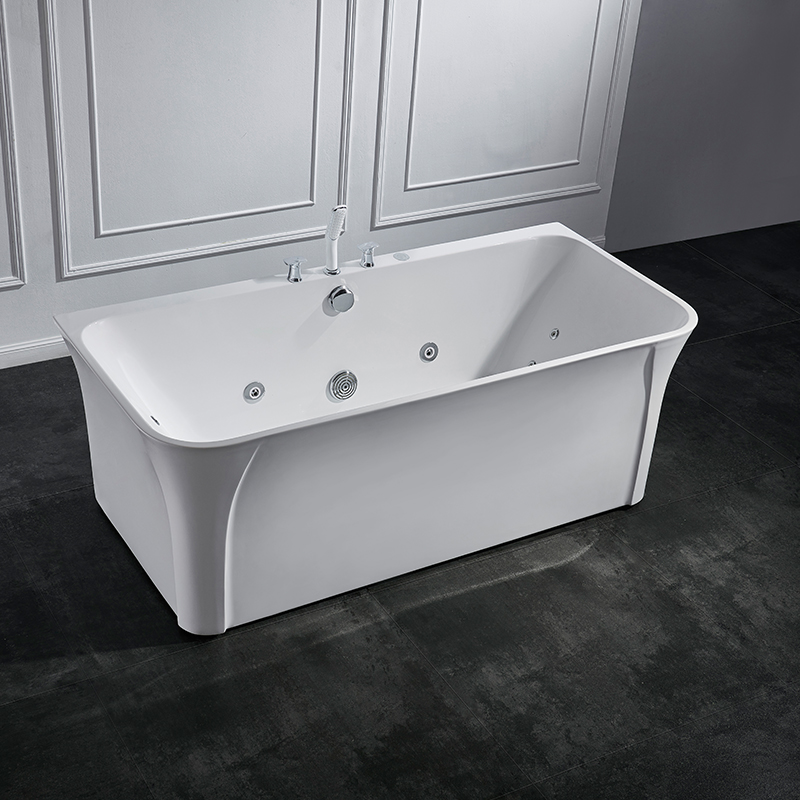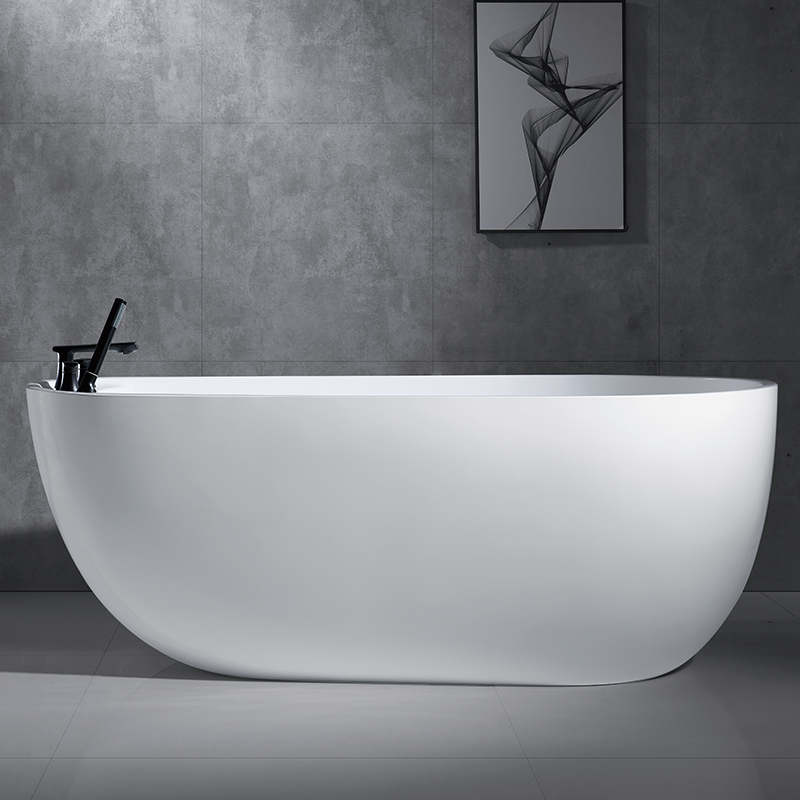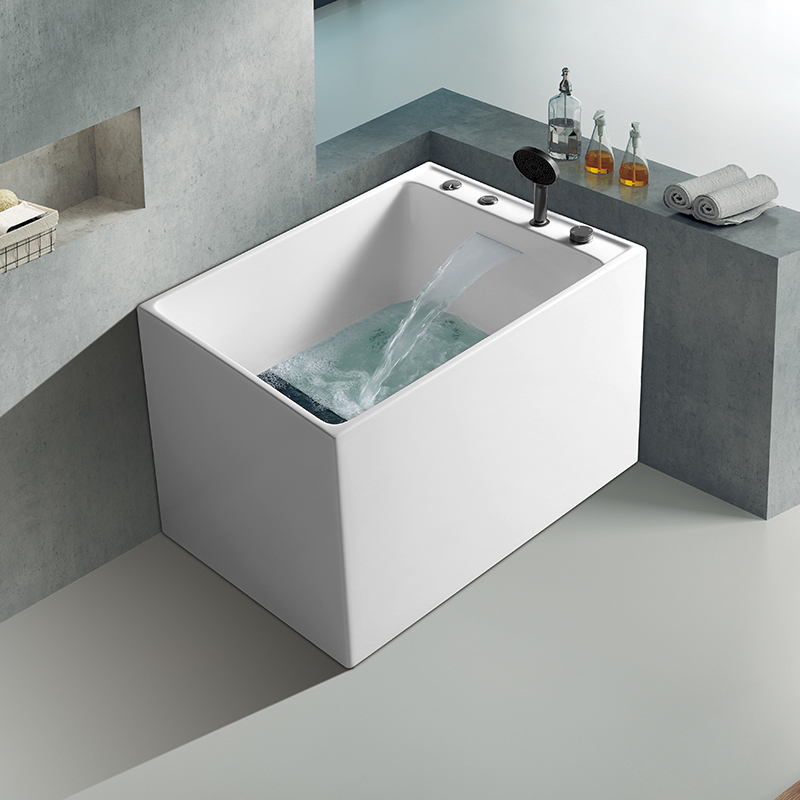There are some differences in the usage habits of bathtubs in Western households compared to those in China, mainly reflected in the following aspects。


Bathing habits: For Westerners, taking a bath is not merely for cleaning the body; it is more of a way to relax and heal. In China, people tend to complete the bathing process quickly and effectively. Taking a shower undoubtedly better suits this fast-paced lifestyle.
The styles that Chinese people like are different from those of foreigners. Chinese people prefer rectangular bathtub or square bathtub ones more often, as long as they are practical. Foreigners not only like those that look good in appearance, but also think that rectangular bathtub or square bathtub ones are very ordinary and they won't like them. They prefer those with special shapes or unique personalities.
Usage frequency: In China, after many people install bathtubs,due to various reasons such as troublesome cleaning and taking up space, the bathtubs become areas for collecting miscellaneous items. In Western countries, bathtubs are essential bathing tools in households, and people are more accustomed to taking baths in them.
Cultural concept: In Western culture, taking a bath is regarded as a way to enjoy and relax, and people pay more attention to the quality and comfort of life. In traditional Chinese culture, practicality and efficiency are more emphasized, which is why showers are more widespread.
The frequency of Westerners taking baths varies from country to country and from individual to individual, and there is no uniform standard. Here are some bathing habits in Western countries.
1.In the UK, 63% of girls and 58% of boys take a bath every day.
2.In Spain, on average, Spaniards take seven baths and soak twice a week.
3.In France, on average, French people take a bath seven times a week and soak twice.
4.In the United States, on average, women take a bath six times a week and men seven times a week.
First of all, it is generally recommended that the duration of a bath be within 20 minutes, which is based on considerations for skin and overall health 123. Taking a bath for a long time may lead to problems such as dry skin and increased cardiovascular pressure. Therefore, this suggestion is universally applicable to both Easterners and Westerners.
Secondly, the living habits and cultural background of Westerners may affect the time they spend taking bathsWesterne.
Bathing habits: For Westerners, taking a bath is not merely for cleaning the body; it is more of a way to relax and heal. In China, people tend to complete the bathing process quickly and effectively. Taking a shower undoubtedly better suits this fast-paced lifestyle.
The styles that Chinese people like are different from those of foreigners. Chinese people prefer rectangular bathtub or square bathtub ones more often, as long as they are practical. Foreigners not only like those that look good in appearance, but also think that rectangular bathtub or square bathtub ones are very ordinary and they won't like them. They prefer those with special shapes or unique personalities.
Usage frequency: In China, after many people install bathtubs,due to various reasons such as troublesome cleaning and taking up space, the bathtubs become areas for collecting miscellaneous items. In Western countries, bathtubs are essential bathing tools in households, and people are more accustomed to taking baths in them.
Cultural concept: In Western culture, taking a bath is regarded as a way to enjoy and relax, and people pay more attention to the quality and comfort of life. In traditional Chinese culture, practicality and efficiency are more emphasized, which is why showers are more widespread.
The frequency of Westerners taking baths varies from country to country and from individual to individual, and there is no uniform standard. Here are some bathing habits in Western countries.
1.In the UK, 63% of girls and 58% of boys take a bath every day.
2.In Spain, on average, Spaniards take seven baths and soak twice a week.
3.In France, on average, French people take a bath seven times a week and soak twice.
4.In the United States, on average, women take a bath six times a week and men seven times a week.
First of all, it is generally recommended that the duration of a bath be within 20 minutes, which is based on considerations for skin and overall health 123. Taking a bath for a long time may lead to problems such as dry skin and increased cardiovascular pressure. Therefore,
this suggestion is universally applicable to both Easterners and Westerners.
Secondly, the living habits and cultural background of Westerners may affect the time they spend taking
rs usually like to take a bath in the morning. This might be because their pace of life is slower and they
have enough time for this activity in the morning. However, this mainly refers to taking a shower rather
than a bathWhen it comes to taking a bath, Westerners may prefer to do it in the evening to relax their bodies and minds and relieve the fatigue of the day.
To sum up, although there is no direct evidence to show the specific duration of Westerners' baths, we
can infer that they generally keep their bath time within 20 minutes to avoid adverse effects on their
skin and body. At the same time, Westerners may be more inclined to take baths in the evening in order
to relax and rest better.




